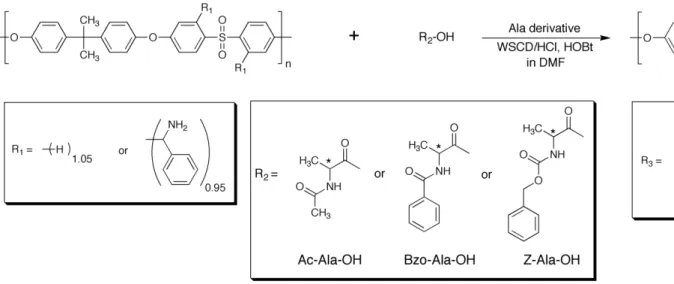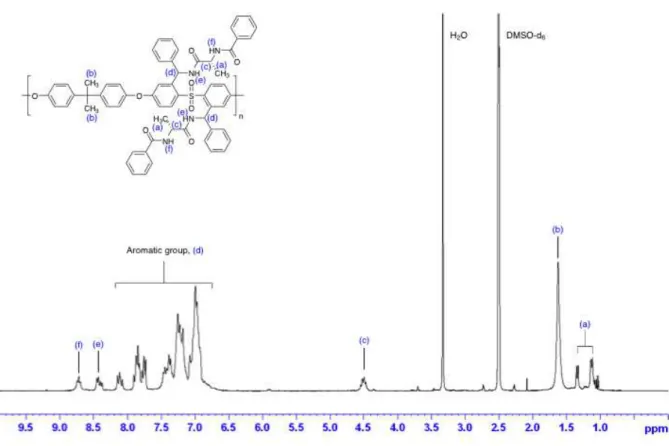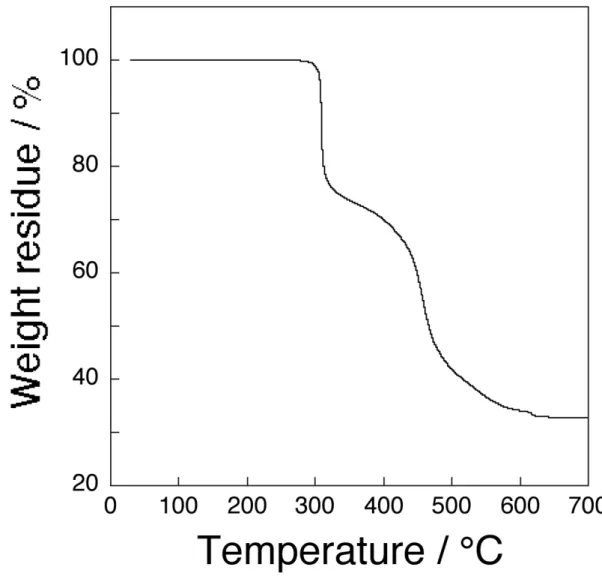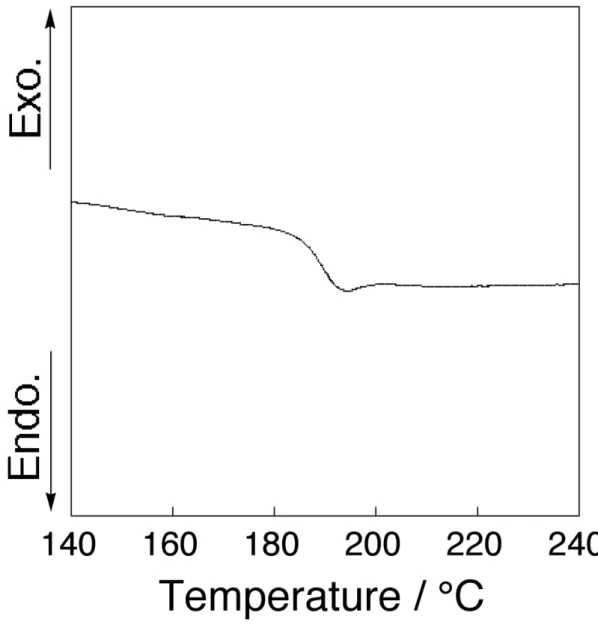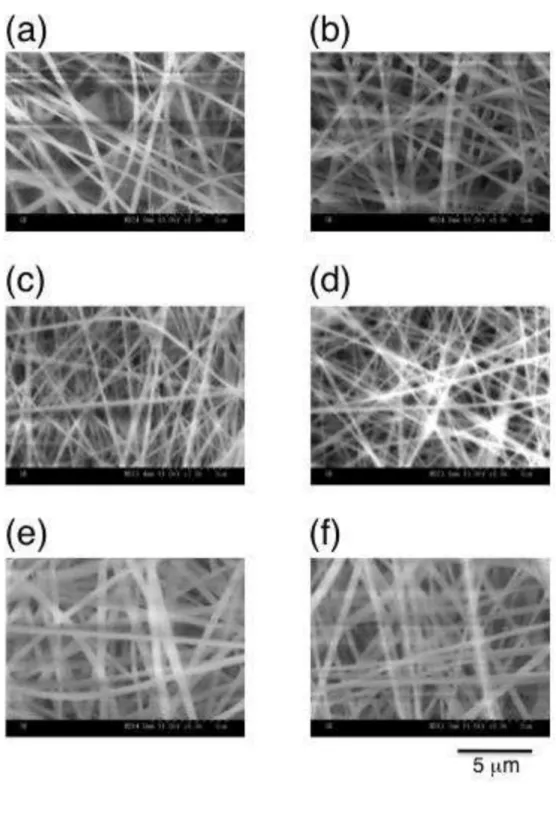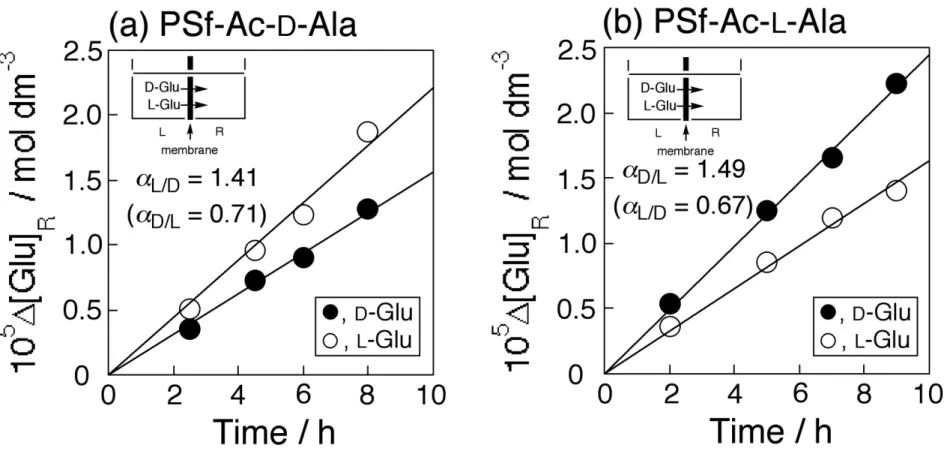Publisher’s version / Version de l'éditeur:
European Polymer Journal, 48, 10, pp. 1717-1725, 2012-09-10
READ THESE TERMS AND CONDITIONS CAREFULLY BEFORE USING THIS WEBSITE.
https://nrc-publications.canada.ca/eng/copyright
Vous avez des questions? Nous pouvons vous aider. Pour communiquer directement avec un auteur, consultez la
première page de la revue dans laquelle son article a été publié afin de trouver ses coordonnées. Si vous n’arrivez pas à les repérer, communiquez avec nous à PublicationsArchive-ArchivesPublications@nrc-cnrc.gc.ca.
Questions? Contact the NRC Publications Archive team at
PublicationsArchive-ArchivesPublications@nrc-cnrc.gc.ca. If you wish to email the authors directly, please see the first page of the publication for their contact information.
NRC Publications Archive
Archives des publications du CNRC
This publication could be one of several versions: author’s original, accepted manuscript or the publisher’s version. / La version de cette publication peut être l’une des suivantes : la version prépublication de l’auteur, la version acceptée du manuscrit ou la version de l’éditeur.
For the publisher’s version, please access the DOI link below./ Pour consulter la version de l’éditeur, utilisez le lien DOI ci-dessous.
https://doi.org/10.1016/j.eurpolymj.2012.07.003
Access and use of this website and the material on it are subject to the Terms and Conditions set forth at Electrospun nanofiber membranes from polysulfones with chiral selector aimed for optical resolution
Mizushima, Hiroaki; Yoshikawa, Masakazu; Li, Nanwen; Robertson, Gilles P.; Guiver, Michael D.
https://publications-cnrc.canada.ca/fra/droits
L’accès à ce site Web et l’utilisation de son contenu sont assujettis aux conditions présentées dans le site LISEZ CES CONDITIONS ATTENTIVEMENT AVANT D’UTILISER CE SITE WEB.
NRC Publications Record / Notice d'Archives des publications de CNRC:
https://nrc-publications.canada.ca/eng/view/object/?id=a8215e0b-780d-40b5-b02c-01d032918a52 https://publications-cnrc.canada.ca/fra/voir/objet/?id=a8215e0b-780d-40b5-b02c-01d032918a52
Electrospun Nanofiber Membranes from Polysulfones with Chiral Selector Aimed for Optical Resolution
Hiroaki Mizushima1, Masakazu Yoshikawa1*, Nanwen Li2, Gilles P. Robertson3, Michael D. Guiver2,3
1
Department of Biomolecular Engineering, Kyoto Institute of Technology, Matsugasaki, Kyoto 606-8585, Japan
2
Department of Energy Engineering, Hanyang University, Seoul 133-791, Republic of Korea
3
Institute for Chemical Process and Environmental Technology, National Research Council of Canada, Ottawa, Ontario K1A 0R6, Canada
ABSTRACT
Polysulfones with three types of alanyl residues, such as N-α-acetylalanine (Ac-Ala-OH), N-α-benzoylalanine (Bzo-Ala-OH), and N-α-benzyloxycarbonylalanine (Z-Ala-OH), as chiral selectors were prepared by polymer reaction. The resulting modified polysulfones showed chiroptical properties, indicating that the chiral selector residues were successfully introduced into the polysulfone. Nanofiber membranes prepared from the polymeric materials showed adsorption selectivity toward mixtures of racemic Glu, which were adopted as model racemates. Flux values for the nanofiber membranes were enhanced two to three orders of magnitude in comparison with the corresponding typical membranes, but without reduction in permselectivity. In the present study, it is shown that nanofiber is a suitable membrane form not only for molecularly imprinted membranes, but it exhibits enhanced throughput in comparison with typical dense membranes without concurrent reduction in permselectivity.
Keywords: Chiral separation; Electrospray deposition; Membrane; Nanofiber fabric; Optical resolution; Permselectivity; Polysulfone
*Manuscript
1. Introduction
In the chemical industry, the synthesis and purification of target compounds are two key processes. In considering these two processes, the purification of the target molecule by separation from mixtures containing by-products, starting materials, solvents, and so forth, is essential, since the value of the target compound is greatly dependent on its purity. In particular, isolation of optically pure enantiomers is important in the pharmaceutical, agrochemical, fragrance, and food additive industries, since chirality plays a crucially important role in biological processes [1,2]. Specific enantiomers, and the corresponding antipode, often exhibit entirely different pharmacological effects. It is often observed that specific drug enantiomers give the desired effect, while the antipodes do not have the desired pharmacological effects or even exhibit toxicity. Asymmetric synthesis [3-7] is one of the definitive methods to obtain enantiomerically pure compounds, but it requires an often complex individual development of synthetic schemes and it does not cover the acquisition of all of optically pure chemicals. From this, at the moment, optically pure enantiomers are obtained by various separation methods involving crystallization resolution, kinetic resolution, and chromatographic separation.
Among various separation technologies, membrane-based separation is regarded as economically and ecologically competitive to other methods. In addition to this, it is a promising and potentially convenient method to obtain enaniomerically pure compounds [8-11], since it can be operated continuously under mild conditions. Membrane-based chiral separation has been studied in the form of liquid [12-14] and polymeric membranes [15-31] with chiral selector or chiral environment. The authors’ research group studied chiral separation with molecularly imprinted membranes [17,20,22,30] and membranes [28-31] bearing amino acid residues. Recently polysulfone bearing alanyl residue as a chiral selector showed chiral separation ability [29]. However, its throughput, in other words, the flux has generally been too low to be applicable to practical separation processes. Membrane morphology in the form of molecularly imprinted nanofiber fabric has been shown to enhance membrane flux without a concurrent reduction in permselecvtivity [32-35], even though membrane flux and permselectivity typically exhibit a trade-off
relationship. In the present study, nanofiber membranes were fabricated from polysulfones with alanyl residue and their membrane performance was studied.
2. Experimental
2.1. Materials
Polysulfone containing benzylamine group (PSf-NH2) with degree of substitution of 0.95 was prepared by the modification of polysulfone Udel P-3500 as reported previously [36]. Following similar procedures for the previous study [36], commercial polysulfone was lithiated with 1.0 mol equivalents of butyllithium, quenched with benzonitrile, then reduced with sodium borohydride to give PSf-NH2 with DS of 0.95. N-α-Acetyl-D-alanine (Ac-D-Ala-OH), N-α-acetyl-L-alanine (Ac-L-Ala-OH), N-α-benzoyl-D-alanine (Bzo-D-Ala-OH), N-α-benzoyl-L-alanine (Bzo- L-Ala-OH), N-α-benzyloxycarbonyl-D-alanine (Z-D-Ala-OH), N-α-benzyloxycarbonyl-
L-alanine (Z-L-Ala-OH) were purchased from Watanabe Chemical Industries, Ltd.
(Hiroshima, Japan) and used without purification. N-(3-Dimethylaminopropyl)-N’-ethylcarbodiimide hydrochloride (WSCD/HCl), 1-hydroxybenzotriazole (HOBt) were purchased from Peptide Institute, Inc. (Osaka, Japan) and used without further purification. N,N-Dimethylformamide (DMF) was purified by conventional methods [37]. Ethanol, dimethylsulfoxide (DMSO),
D-glutamic acid (D-Glu), and L-glutamic acid (L-Glu) were obtained from commercial
sources and used as received. Water purified with an ultrapure water system (Simpli Lab. Millipore S. A., Molsheim, France) was used.
2.2. Synthesis of membrane materials
Polysulfone with alanyl residue as a chiral selector was prepared as reported previously [29]. As shown in Fig. 1, a DMF solution containing requisite amounts of PSf-NH2, alanine derivative, WSCD/HCl, and HOBt was stirred at the prescribed temperature and reaction time. After the reaction, the reaction mixture was poured into ethanol and the product was washed with ethanol and dried in vacuo for 2 d.
The Fourier-transform infrared (FTIR) spectra of DMSO-cast membranes were recorded by using Perkin-Elmer Spectrum GX; 64 scans at resolution of 4 cm-1. The 1
H NMR spectra (300 MHz) were recorded in DMSO-d6 using a Bruker AV-300 with residual partially protonated solvent of DMSO-d6 as an internal standard (δ = 2.50) [38].
The thermal stability of the modified polysulfone was evaluated on a Hi-Res Modulated TGA 2950 (TA instruments) under nitrogen at a heating rate of 20 °C min-1. Differential scanning calorimetry (DSC) measurements were performed with a Shimadzu DSC-60 at a heating rate of 10 °C min-1
and a nitrogen flow rate of 50 cm3 min-1.
The specific rotations were obtained with Horiba SEPA-200 Polarimeter at 589 nm at ambient temperature in DMF.
2.4. Membrane preparation
Membranes for transport experiments were prepared as follows: a quantity of 0.136 g of membrane material was dissolved in 2.0 cm3 of DMF. The polymer solution was poured into a flat-laboratory dish (5.0 cm diameter), followed by immersing a PTFE membrane filter (Omnipore Membrane Filter (Millipore Corporation); diameter, 47 mm; pore radius, 1.00 µm; porosity, 0.80; thickness, 85 µm) into the cast solution. The flat-laboratory dish was then evacuated in a desiccator so that the cast solution could thoroughly penetrate into pores in the PTFE membrane filter. The solvent was allowed to evaporate at 50 °C and atmospheric pressure for 2 d. The thickness of the impregnated membrane was 106 -111 µm.
Membranes for adsorption experiments were prepared as follows: a 0.30 g of membrane material was dissolved in 3.0 cm3 of DMF. The DMF solution prepared above was poured into a flat laboratory dish (11.6 cm diameter) and the solvent was allowed to evaporate at 50 °C for 2 d. The thickness of the membrane thus prepared was 23 – 26 µm.
2.5. Preparation of nanofiber membrane
A prescribed amount of membrane material was dissolved in 1.0 cm3 of DMF. Esprayer ES-2000 (Fuence Co. Ltd., Wako, Japan) was adopted as the electrospray deposition device. Polymer solution was electrosprayed at ambient temperature using
an applied voltage summarized in Table 4. The syringe used in the present study had a capillary tip of 0.52 mm diameter. The feed rate was fixed to be 3.00 ~ 4.00 mm3, which are also given in Table 4. A grounded aluminum foil used as a counter electrode was placed 10.0 cm from the tip of the capillary.
The membrane morphology, such as diameter and thickness of the electrosprayed nanofiber membranes, were determined with a Hitachi S-3000 scanning electron microscope (SEM). A small section of the membrane was placed on the SEM sample holder. The fiber diameter of nanofiber membrane was determined using Image J software program by measuring at least 30 fibers from each SEM image.
2.6. Enantioselective membrane transport
A membrane (effective membrane area, 3.0 cm2
) was fixed tightly with Parafilm between two chambers of a permeation cell. The volume of each chamber was 40.0 cm3. A 50 vol.-% aqueous ethanol solution of racemic Glu was placed in the left-side chamber (L-side) and a 50 vol.-% aqueous ethanol solution in the right-side chamber (R-side). Each concentration of racemic Glu was fixed to be 2.0 x 10-4 mol dm-3. All experiments were done at 40 °C with stirring. An aliquot was drawn from the permeate side (R-side) at each sampling time. The amounts of D- and L-isomers were
determined by liquid chromatography (LC) (Jasco PU1580, equipped with a UV detector (Jasco UV1570)) employing Chirlpak MA(+) column (50 x 4.6 mm (id), Daicel Chemical Ind.). Aqueous copper sulfate was used as a mobile phase.
The flux J (mol cm cm-2 h-1), is defined as:
J = Qδ/At (1)
where Q (mol) is the amount of transported Glu, δ (cm) membrane thickness, A (cm2 ) effective membrane area, and t (h) is the time.
The permselectivity αi/j is defiend as the flux ratio (Ji/Jj) divided by the concentration ratio [i-Glu]/[j-Glu]:
The subscripts D and L refer the D-isomer of Glu and the L-isomer of Glu, respectively. There are two situations; i = D, j = L and i = L, j = D.
2.7. Adsorption selectivity
The membranes, such as typical dense membranes and nanofiber membranes, were immersed in a 50 vol.-% aqueous ethanol solution of a racemic mixture of Glu (concentration of each enantiomer was 2.0 x 10-4 mol dm-3), and the membranes were allowed to equilibrate at 40 °C. Aliquots of the solution at the initial stage and after equilibrium had been reached were used for quantitative estimation by LC as described above.
The amount of Glu in the supernatant subtracted from the initial amount in the solution gave the amount of Glu adsorbed by the membrane. The adsorption selectivity SA(i/j) is defined as
SA(i/j) = ((i-Glu)/(j-Glu)) / ([i-Glu]/[j-Glu]) (3)
where (i-Glu) and [i-Glu] are the amount of Glu adsorbed in the membrane and the concentration in the solution after equilibrium had been reached, respectively.
3. Results and discussion
3.1. Introduction of alanyl residue into polysulfone
In the IR spectra, the amide I bands were observed at 1655 cm-1 for polysulfone with Ac-Ala (PSf-Ac-Ala), 1652 cm-1
for polysulfone bearing Bzo-Ala (PSf-Bzo-Ala), and 1687 cm-1 for polysulfone having Z-Ala (PSf-Z-Ala), respectively. As an example, the 1H NMR spectrum of PSf-Bzo-D-Ala is shown in Fig. 2, which was similar to the one observed for PSf-Bzo-L-Ala. From 1H NMR spectra, it was
calculated that 89 % of PSf-NH2 amino groups reacted with Bzo-D-Ala-OH. From this, the degree of substitution (DS) for the alanyl moiety in PSf-Bzo-D-Ala was determined to be 0.85. The results for six types of polysulfone are summarized in Table 1 together with reaction conditions.
Fig. 3 shows a thermogravimetric analysis (TGA) thermograph for PSf-Bzo-D-Ala as an example. The degradation temperature, Td, of PSf-Bzo-D-Ala was determined to be 296 °C. As summarized in Table 2, that for PSf-Bzo-L-Ala and
those for PSf-Ac-Ala’s showed similar thermal stability like that of PSf-Bzo-D-Ala. Contrary to this, Td values for PSf-Z-Ala was around 50 °C lower than those for polysulfones with Ac-Ala or Bzo-Ala residues. This might be due to the fact that the protecting group of Z moiety has ether linkage, which is thought to be more flexible than those in Ac- or Bzo- group. The observed Td values for PSf-Ac-Ala modified in the present study was around 100 °C higher than those previously reported [29]. This might be attributed to the difference in the degree of substitution of benzylamine group; that of the previous study was 1.50, while that of the present study 0.95.
Fig. 4 displays a DSC thermograph of PSf-Bzo-D-Glu as an example. The
glass transition temperature of PSf-Bzo-D-Glu was determined to be 183.4 °C. The glass transition temperatures (Tgs) for the polymeric materials are also summarized in Table 2. Tgs were observed to decrease with the enlargement of the protecting group. In the present study, Tg values are more dependent on the flexibility, rather than the size of the protecting group, which causes steric hindrance [39].
3.3. Chiroptical properties
The optical rotations ([α]D) of the polysulfone with chiral selector are summarized in Table 3 together with those for the starting building blocks, which comprise six kinds of alanine derivative. The optical rotations for polysulfone with
D-alanyl residue were opposite to those for that bearing L-alanyl residue. The results summarized in Table 3 revealed that optically active poluysulfones were successfully obtained via polymer reaction between PSf-NH2 and alanine derivatives.
3.4. Membrane performance
First, the transport ability of typical dense membranes was studied. Contrary to the previous study [29], membrane transport phenomena were observed, though the fluxes were very low. PSf-Ac-D-Ala membrane transported L-Glu in preference to D-Glu and vice versa, while PSf-Bzo-Ala and PSf-Z-Ala membranes hardly gave permselectivity. In membrane separation, the enhancement of product throughput or flux is indispensable for practical applications, though membrane flux and
permselectivity often show a trade-off relationship. As mentioned before, the form of nanofiber membranes appear to enhance the flux of a given membrane material without reduction of permselectivity [32-35]. Thus, nanofiber membranes were prepared from those six types of polysulfone substituted with alanyl residue. SEM images of those nanofiber membranes are shown in Fig. 5. In all the nanofiber membranes prepared in the present study, beads are hardly observed. Table 4 summarizes nanofiber membrane thickness and fiber diameter of each membrane together with conditions for nanofiber fabrication.
As an example of membrane transport, time-transport curves of racemic Glu through PSf-Ac-D-Ala and PSf-Ac-L-Ala membranes are shown in Fig. 6. PSf-Ac-D-Ala nanofiber membrane selectively transported the L-isomer and vice versa. The permselectivity was slightly increased compared with typical dense membrane, from 1.20 to 1.41 for PSf-Ac-D-Ala nanofiber membrane and from 1.36 to 1.49 for the PSf-Ac-L-Ala nanofiber membrane. PSf-Bzo-Ala and PSf-Z-Ala nanofiber membranes showed permselectivities, though usual membranes derived from those materials hardly gave permselectivity.
It is an interesting subject to elucidate the expression mechanism of permselectivity for those membranes. To this end, adsorption selectivities toward racemic Glu for those membranes were investigated. The results of adsorption study are summarized in Table 5. As observed in the previous study [29], polysulfone bearing the D-isomer of Ac-Ala showed adsorption selectivity toward D-Glu and vice versa. For adsorption selectivities for typical dense membranes from PSf-Bzo-Ala and PSf-Z-Ala, the amounts of Glu adsorbed in those membranes were too small to experimentally determine adsorption selectivity. Contrary to this, adsorption selectivities for PSf-Bzo-Ala and PSf-Z-Ala nanofiber membranes could be determined, but against expectation, a drastic increase in the amount of adsorbed enantiomers for PSf-Ac-Ala nanofiber membranes was not observed. This is likely due simply to the significant differences in morphology between nanofiber membrane and typical dense membrane. From results for nanofiber membranes, PSf-Bzo-D-Ala dense membrane is elucidated to show L-isomer adsorption selectivity and vice versa; PSf-Z-D-Glu usual
one to show the adsorption selectivity toward D-Glu and vice versa, like PSf-Ac-Ala membranes.
The permselectivities of PSf-Bzo-Ala and PSf-Z-Ala membranes reflect their adsorption selectivity; the enantiomer preferentially incorporated into the membrane was selectively transported, though the permselectivity was lower than the corresponding adsorption selectivity. On the other hand, dense and nanofiber PSf-Ac-Ala membranes selectively transported the enantiomer, which was less incorporated into the membrane; in other words, both membranes, such as dense and nanofiber membranes, from PSf-Ac-D-Ala, selectively transported L-Glu and vice versa. Such transport phenomena have often been observed in chiral separation [19,22,29,30,35]. Retarded transport of enantiomer preferentially incorporated into the membrane might be due to the relatively strong interaction between the enantiomer and the membrane. Relatively high affinity between the enantiomer selectively adsorbed and the membrane suppressed its diffusivity, and, as a result, the antipode was selectively transported through the membrane as observed.
In order to compare membrane performances of flux, the molar mobility, u (mol cm cm2
J-1 h-1
), for Glu for each membrane was calculated. From the Nernst-Planck equation, a flux can be represented by the following equation [40]:
J = -ucRT [(dlnc/dx) + (zF/RT)(dφ/dx) + (v/RT)(dP/dx)] (4)
where, J denotes the sum of D-Glu and L-Glu fluxes, c is the concentration of each Glu in the feed side, R is the universal gas constant, T is temperature in Kelvin, dc/dx is the concentration gradient at that point, z is valence of permeant, F is the Faraday constant, dφ/dx denotes electrical potential gradient at that point, v is partial molar volume of permeant, and dP/dx is the pressure gradient at that point.
In the present study, membrane transport experiments were carried out under isothermal and isobar conditions; and a concentration gradient was adopted as a driving force for membrane transport. From these, the flux in the present study can be represented by just the first term in equation (4). Therefore the molar mobility was determined by the following equation:
The molar mobility is defined as the mobility and is simply the flux per unit membrane area, per unit membrane thickness, per unit concentration, and per unit driving force. In the calculation of the chemical potential due to the concentration gradient, the concentration of Glu in the permeate side was determined to be 1.0 x 10-8 mol dm-3, since the lowest limit of the detection of Glu in the present study was the concentration of around 1.0 x 10-8
mol dm-3 .
In Table 6, membrane performances, such as permselectivity and molar mobility for each membrane, are summarized. In the table, a relative mobility is also shown for convenience. In the upper part of the table, of which data are membrane performances for the membranes from PSf-Ac-Ala, the relative molar mobility, which is relative to the usual membrane from PSf-Ac-L-Ala, is given. In the middle part of the table, the relative molar mobility, which is relative to PSf-Bzo-D-Ala, is given; and
in the lower part of the table, that, which is relative to PSf-Z-D-Ala, is given.
Flux values for nanofiber membranes were two to three orders of magnitude higher than those for dense membranes. Comparing with previous results [32,33,35], the present nanofiber membranes gave similar molar mobility, though the membrane forms for the previous studies were molecularly imprinted nanofiber membranes. Nanofiber membrane permselectivities were not so high; in the case of PSf-Bzo-Ala and PSf-Z-Ala, nanofiber membranes gave slightly enhanced permselectivities, while the corresponding dense membranes hardly showed permselectivities. As observed in molecularly imprinted nanofiber membranes, flux values were enhanced without depression of permselectivity; much more, in the case of PSf-Bzo-Ala and PSf-Z-Ala nanofiber membranes.
4. Conclusions
Polysulfones with three types of alanyl residue as chiral selectors were prepared by polymer reaction. The resulting modified polysulfones showed chiroptical properties, indicating that the chiral selector residues were successfully introduced into the polysulfone. Nanofiber membranes derived from those polymeric materials showed adsorption selectivities toward mixture of racemic Glu, which were adopted as model racemates. Flux values for those nanofiber membranes were two to three orders of magnitude enhanced comparing with the corresponding typical dense
membranes, without reduction of permselectivity. In the present study, it was revealed that nanofiber is a suitable membrane morphological form to enhance throughput without reduction of permselectivity.
References
[1] Voet D, Voet JG Biochemistry. New York: Wiley, 1990.
[2] McKee T, McKee JR Biochemistry-The molecular basis of life. 3rd edition, Boston: WCB/McGraw-Hill, 2003.
[3] Knowles, WS Asymmetric hydrogenations (Nobel Lecture) Angew Chem Int Ed 2002;41(12):1998-2007.
[4] Noyori R Asymmetric catalysis: Science and opportunities (Nobel Lecture) Angew Chem Int Ed 2002;41(12):2008-2022.
[5] Sharpless KB Searching for new reactivity (Nobel Lecture) Angew Chem Int Ed 2002;41(12):2024-2032.
[6] Asymmetric synthesis – The Essentials. 2nd edition, Christmann M, Bräse S., editors. Weinheim: Wiley-VCH, 2008.
[7] Asymmetric synthesis and application of α-amino acids (Volume 1009 in ACS Symposium Series). Soloshonok VA, Izawa K, editors. Washington: American Chemical Society, 2009.
[8] Afonso CAM, Crespo JG Recent advances in chiral resolution through membrane-based approaches. Angew Chem Int Ed 2004;43(40):5293-5295. [9] Maier NM, Lindner W Chiral recognition applications of molecularly imprinted
polymers: a critical review. Anal Bioanal Chem 2007;389(2):377-397.
[10] Xie R, Chu L-Y, Deng J-G Membranes and membrane processes for chiral resolution. Chem Soc Rev 2008;37(6);1243-1263.
[11] Higuchi A, Tamai M, Ko Y-A, Tagawa Y, Wu Y-H, Freeman BD, Bing J-T, Chang Y, Ling Q-D Polymeric membranes for chiral separation of pharmaceuticals and chemicals. Polym Rev 2010;50(2):113-143.
[12] Newcomb M, Toner JK, Helgeson RC, Cram DJ Host-guest complexation. 20. Chiral recognition in transport as a molecular basis for a catalytic resolving machine. J Am Chem Soc 1979;101(17):4941-4947.
[13] Pickering PJ, Chaudhuri JB Enantioselective extraction of (D)-phenylalanine from racemic (dl)-phenylalanione using chiral emulsion liquid membrane. J Membr Sci 1997;127(2):115-130.
[14] Maximini A, Chmiel H, Holdik H, Maier NW Development of a supported liquid membrane process for separating enantiomers of N-protected amino acid derivatives. J Membr Sci 2006;276(1-2):221-231.
[15] Maruyama A, Adachi N, Takatsuki T, Torii M, Sanui K, Ogata N Enantioselective permeation of α-amino acid isomers through poly(amino acid)-derived membranes. Macromolecules 1990;23(10):2748-2752.
[16] Tone S, Masawaki T, Eguchi K The optical resolution of amino acids by plasma polymerized terpene membranes. J Membr Sci 1996;118(1):31-40.
[17] Yoshikawa M, Izumi J, Ooi T, Kitao T, Guiver MD, Robertson GP Carboxylated polysulfone membranes having a chiral recognition site induced by an alternative molecular imprinting technique. Polym Bull 1998;40(4-5):517-524.
[18] Taki K, Arita I, Satoh M, Komiyama J Selective transport of D,L tryptophan through poly(L-glutamic acid) membranes. J Poluym Sci: Part B: Polym Phys 1999;37(10):1035-1041.
[19] Dzgoev A, Haupt K Enantioselective molecularly imprinted polymer membranes. Chirality 1999;11(5-6):465-469.
[20] Kondo Y, Yoshikawa M, Okushita H Molecularly imprinted polyamide membranes for chiral recognition. Polym Bull 2000;44(5-6)517-524.
[21] Romero J, Zydney AL Staging of affinity ultrafiltration processes for chiral separations. J Membr Sci 2002;209(1):107-119.
[22] Yoshikawa M, Izumi J Chiral recognition sites converted from tetrapeptide derivatives adopting racemates as print molecvules. Macromol Biosci 2003;3(9):487-498.
[23] Kim JH, Kim JH, Jegal J, Lee K-H Optical resolution of a-amino acids through enantioselective polymeric membranes based in polysaccharides. J Membr Sci 2003;213(1-2)273-283.
[24] Higuchi A, Higuchi Y, Furuta K, Yoon BK, Hara M, Maniwa S, Saitos M, Sanui K Chiral separation of phenylalanine by ultrafiltration through immobilized DNA membranes. J Membr Sci 2003,221(1-2):207-218.
synthesis of chiral helical poly(hydroxyl-containing phenylacetylene) membranes by in-situ depinanylsilylation and their enantioselective permeabilities. Macromolecules 2005;38(15):6367-6373.
[26] Hadik P, Szabo L-P, Nagy E, Farkas Zs Enantioseparation of D, L-lactic acid by membrane techniques. J Membr Sci 2005;251(1-2):223-232.
[27] Son S-H, Jegal J Chiral separation of D,L-serine racemates using a molecularly imprinted polymer composite membrane. J Appl Polym Sci 2007;104(3):1866-1872
[28] Hashimoto T, Yoshikawa M Chiral separation of acemic mixtures with chiral polyamide membranes containing aspartyl residues in their main chains. Current Nanoscience 2011;7(6):915-924.
[29] Mizushima H, Yoshikawa M, Robertson GP, Guiver MD, Optical resolution membranes from polysulfones bearing alanine derivatives as chiral selectors. Macromol Mater Eng 2011;296(6):562-567.
[30] Hatanaka M, Nishiuoka Y, Yoshikawa M Polyurea with L-lysinyl residues as components: Application to membrane separation of enantiomers. Macromol Chem Phys 2011;(13)1351-1359.
[31] Nakagawa M, Ikeuchi Y, Yoshikawa M, Yoshida H, Sakurai S Optical resolution of racemic amino acid derivatives with chiral polyamides bearing glutamyl residue as a diacid component. J Appl Polym Sci 2012;123(2):857-865.
[32] Yoshikawa M, Nakai K, Matsumoto H, Tanioka A, Guiver MD, Robertson GP Molecularly imprinted nanofiber membranes from carboxylated polysulfone by electrospray deposition. Macromol Rapid Commun 2007;28(21):2100-2105. [33] Sueyoshi Y, Fukushima C, Yoshikawa M Molecularly imprinted nanofiber
membranes from cellulose acetate aimed for chiral separation. J Membr Sci 2010;357(1-2):90-97.
[34] Yoshikawa M, Tanioka A, Matsumoto H Molecularly imprinted nanofiber membranes. Curr Opin Chem Eng 2011;1(1):18-26.
[35] Sueyoshi Y, Utsunomiya A, Yoshikawa M, Robertson GP, Guiver MD Chiral separation wih molecularly imprinted polysulfone-aldehyde derivatized nanofiber membranes. J Membr Sci 2012:401-402:89-96.
[36] Robertson GP, Guiver MD, Bilodeau F, Yoshikawa M Modified polysulfones. VI. Preparation of polymer membrane materials containing benzimine and
benzylamine groups as precursors for molecularly imprinted sensor devices. J Polym Sci: Part A: Polym Chem 2003;41(9):1316-1329.
[37] Riddick JA, Bunger WB, Sakano TK Organic solvents. 4th edition, New York: Wiley, 1986.
[38] Silverstein RM, Webster FX Spectrometric Identification of Organic Compounds. 6th edition, New York: Wiley, 1998.
[39] Walton DJ, Lorimer JP Polymers. Oxford: Oxford University Press, 2000.
[40] Schultz, SG Basic principles of membrane transport. Cambridge: Cambridge University Press, 1980.
Figure Captions
Fig. 1 Synthetic scheme of polysulfones bearing an alanyl residue as a chiral selector.
Fig. 2 1H-NMR spectrum of PSf-Bzo-D-Ala (300 MHz, DMSO-d6).
Fig. 3 TGA curve of PSf-Bzo-D-Ala (heating rate, 20 °C min-1).
Fig. 4 DSC curve of PSf-Bzo-D-Ala. (Heating rate, 10 °C min-1; N2 flow, 50 cm 3
min-1.)
Fig. 5 SEM images of nanofiber membranes. ((a) PSf-Ac-D-Ala; (b)
PSf-Ac-L-Ala; (c) PSf-Bzo-D-Ala; (d) PSf-Bzo-L-Ala; (e) PSf-Z-D-Ala; (f) PSf-Z-L-Ala.)
Fig. 6 Time-transport curves of racemic Glu through PSf-Ac-D-Ala nanofiber mebrane (a) and PSf-Ac-L-Ala nanofiber membrane (b). ([D-Glu]L,0 = [L-Glu]L,0 = 2.0 x 10-4
mol dm-3 .)
Fig. 1 Synthetic scheme of polysulfones bearing an alanyl residue as a chiral selector. Figure(s)
Fig. 4 DSC curve of PSf-Bzo-D-Ala. (Heating rate, 10 °C min-1; N2 flow, 50 cm3
Fig. 5 SEM images of nanofiber membranes. ((a) PSf-Ac-D-Ala; (b) PSf-Ac-L-Ala; (c) PSf-Bzo-D-Ala; (d) PSf-Bzo-L-Ala; (e) PSf-Z-D-Ala; (f) PSf-Z-L-Ala.)
Fig. 6 Time-transport curves of racemic Glu through PSf-Ac-D-Ala nanofiber mebrane (a) and PSf-Ac-L-Ala nanofiber membrane (b). ([D-Glu]L,0 = [L-Glu]L,0 = 2.0 x 10-4 mol dm-3.)
